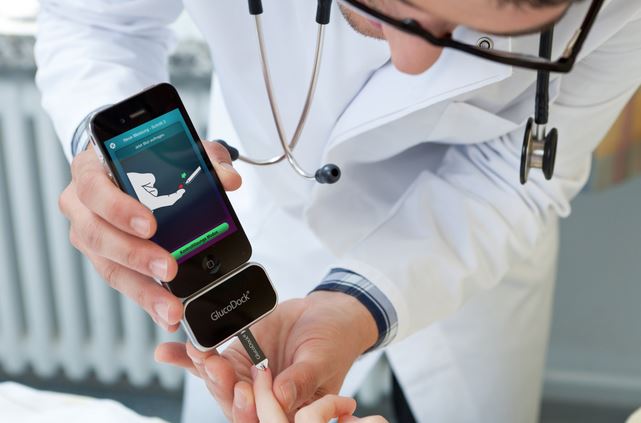
Every few weeks it seems there is a flurry of activity on news sites about a new breakthrough technology that will revolutionise healthcare, save lives and cure diseases – but what is the reality?
Although breakthroughs are being made in several fields of healthcare, the real world impact can be questioned.
At its most basic, eHealth is the practice of supporting healthcare with electronic processes and communication. Its scope has broadened as the term has become more widely accepted and it can now be attributed to anything from pacemakers to nanotechnology.
Stepping away from the social impact of eHealth and seperating the hype from reality, CBR looks at what technologies are out there, the security concerns around such tech and whether or not any of this technology is actually in use or is still just a pipe dream.
Nanotechnology
This technology has for a while been dubbed as perhaps one of the greatest technological breakthroughs in human history. Its focus might not just be on healthcare, but that is where we are going to look.
By nanotechnology what I mean is tiny robots, robots at an atomic level.
The idea is that we can build molecular sized machines that are capable of doing anything. Moore’s Law is helping to drive advances in the technology, for example there currently exists transistors which are nano-scale.
A team of Columbia University Engineering researchers in the US worked with the departments of Physics and Chemistry to find a way to study single-molecule interactions on very short time scales. This can be used to detect the binding of the two halves of the DNA double helix with the DNA tethered to the transistor sensor.
This is far from the only proposed use case for nanotechnology. Carbon nanotubes could be used in portable electronics to help fight against cancer and help create artificial muscles. Scientists at the University of Texas, the University of British Columbia, University of Wollongong and Hanyang University developed a solution in 2013 that opened ways for the creation of artificial muscles.
Don’t expect to find these solutions in your local hospital anytime soon though. While these use cases have been cited by many for a number of years now, they are yet to break into the mainstream.
Much is still to be done to move this technology into the real world.
Cancer Treatment
When you think of those working on a cure for cancer, you immediately think of scientists, doctors, and people in labs with test tubes – tech companies certainly do not spring to mind.
However, tech companies have joined the fight against cancer, deploying technology in different, innovative ways. One such company is IBM.
In May, for example, IBM revealed that as part of the Watson Health initiative it is collaborating with Fourteen US and Canadian cancer institutes to use the Watson supercomputer to speed up DNA analysis for personalised treatment.
The partners will use Watson’s cognitive capabilities and Genomic Analytics to reduce the time taken for the transition of DNA information to create a genetic profile of a patient. The aim is to reduce this time from weeks, to minutes.
IBM is far from alone in the fight against cancer as companies such as Intel and SAP have both made moves in this space.Intel has launched a PaaS cloud software suite that is dedicated to cancer research, while SAP’s HANA platform is being used by The American Society for Clinical Oncology subsidaries to harness big data and help deliver care to patients.
Going paperless
This is one area where technology is having a real impact as health organisations look to go paperless in order to provide a fully digital service.
At the start of February 2016, the NHS was handed £4.2 billion by the goverment in order to push it into the digital age. What this means is that prescriptions, booking appointments and customer records will all go online. The idea is that a digital service will be more convenient for both patients and doctors and help with faster diagnoses.
One of the key benefits is the cost savings that this investment could help deliver. It is hoped that the funding will help to produce £22 billion in savings by reducing waste and increasing productivity.
Wearable biosensors
This is an area where, again, there have been real breakthroughs which are starting to impact the daily lives of people around the world.
Philips for example has just revealed its next generation monitoring solution for at-risk patients in settings such as the general ward.
This is a step-up from the kind of health tracking devices found in Fitbits or other consumer focused wearables, as this is a medical-grade, connected biosensor that automatically and continuously measurers vital signs such as heart rate, respiratory rate, skin temperature and others.
As it collects this data it transmits it to a connected clinical decision support software application, which can be configured to notify the necessary people once any preset limits are exceeded.
Essentially this is taking the wearable to the next level, taking the Internet of Things into healthcare.
Pacemakers and security
Pacemakers aren’t anything new but they have in recent years become part of the IoT revolution that is rapidly changing technology.
Patients have had wireless-enabled pacemakers fitted, which are essentially small computers that are keeping the patient alive.
While this is good technology, it was found that it is less than secure and could potentially be vulnerable to cyberattacks.
Within these pacemakers are two wireless interfaces: a short-range one that could be used to adjust the pacemaker settings and a long-range one for sending data logs over the internet.
In 2008 a paper was published by the University of Massachusetts identifying the potential threat of pacemakers being attacked. Four years later and the US Government Accountability Office put forward a paper warning the US Food and Drug Administration to start thinking about how secure these devices are from attacks.
Fast forward to 2015 and researchers managed to hack a pacemaker and kill a mannequin. The point of highlighting this is to show just how slowly security has developed alongside technology in healthcare.
The technology has been created and implemented, but it seems that nobody has questioned the security of it, or at least listened to those that have warned about it.
The security of eHealth is coming under increasing levels of scrutiny, especially as it is not just the device which poses a threat. Hospitals and other healthcare organisations hold huge amounts of very personal data – data which could be a lucrative pay day for hackers.
The threat of data loss was highlighted earlier this month when the Hollywood Presbyterian Medical Center in Los Angeles was hit by a randomware attack which led to computers being shut down after hackers locked patient files in exchange for a ransom.
While the FBI and LAPD investigated the attack the hospital was forced to pay a ransom of $17,000 in order to regain access. The hackers actually demanded 40 Bitcoins, which is roughly $17,000.
During the RSA security conference in San Francisco, which starts on the 29th of February, Chris Carlson, VP product management at Hexis Cyber Solutions thinks that healthcare security will be one of the major trends being discussed.
Carlson said: "Organised crime targetting the healthcare sector is on the rise – the recent ransomware attack on the Hollywood Presbyterian Medical Center in Los Angeles a case in point. Unlike the financial services industry, which has invested a lot in fraud detection technology, the healthcare industry needs to up its defences – especially as patient records move online."
Although there are plenty of examples of breakthrough technology such as the nanotechnology highlighted above, these are not yet a reality in healthcare.
The eHealth technology that is impacting lives is around improving treatment for patients, improving general care and enabling researchers to do their job better.






